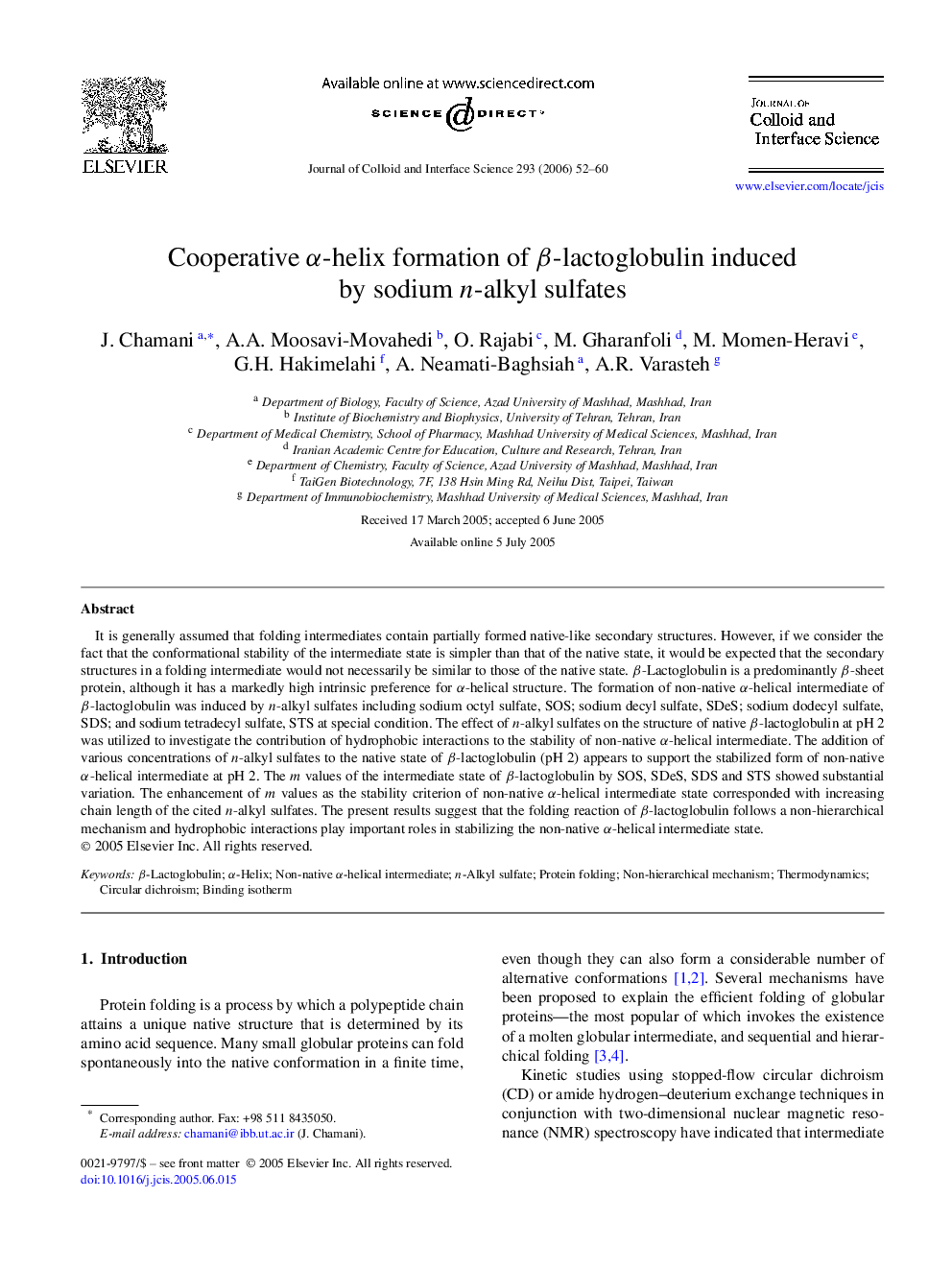| Article ID | Journal | Published Year | Pages | File Type |
|---|---|---|---|---|
| 613785 | Journal of Colloid and Interface Science | 2006 | 9 Pages |
It is generally assumed that folding intermediates contain partially formed native-like secondary structures. However, if we consider the fact that the conformational stability of the intermediate state is simpler than that of the native state, it would be expected that the secondary structures in a folding intermediate would not necessarily be similar to those of the native state. β-Lactoglobulin is a predominantly β-sheet protein, although it has a markedly high intrinsic preference for α-helical structure. The formation of non-native α-helical intermediate of β-lactoglobulin was induced by n-alkyl sulfates including sodium octyl sulfate, SOS; sodium decyl sulfate, SDeS; sodium dodecyl sulfate, SDS; and sodium tetradecyl sulfate, STS at special condition. The effect of n-alkyl sulfates on the structure of native β-lactoglobulin at pH 2 was utilized to investigate the contribution of hydrophobic interactions to the stability of non-native α-helical intermediate. The addition of various concentrations of n-alkyl sulfates to the native state of β-lactoglobulin (pH 2) appears to support the stabilized form of non-native α-helical intermediate at pH 2. The m values of the intermediate state of β-lactoglobulin by SOS, SDeS, SDS and STS showed substantial variation. The enhancement of m values as the stability criterion of non-native α-helical intermediate state corresponded with increasing chain length of the cited n-alkyl sulfates. The present results suggest that the folding reaction of β-lactoglobulin follows a non-hierarchical mechanism and hydrophobic interactions play important roles in stabilizing the non-native α-helical intermediate state.
